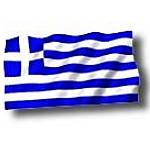21st Century Toys & Pegasus Hobbies conversion & scratchbuild
The Mistel (Mistletoe in German language), also known as Beethoven Gerät or Vati und Sohn (Daddy and Son), was a Luftwaffe composite aircraft type of bomber, appearing late in World War II. The Mistel composites were ultimately born of desperation due to Allied numerical superiority in both men and material. The Mistel series of composite aircraft are without a doubt one of the strangest concepts to achieve operational status with the Luftwaffe. The original concept was proposed to the RLM in 1941 by Siegfried Holzbauer, a Junkers test pilot. His idea was to make use of "tired" Junkers Ju-88 airframes by packing them with explosives, fly them near a target and crash them into the target after the fighter had released itself. The fighter pilot would control the "missile" after release by remote control. To turn the tide of battle the German aircraft industry resorted to designing unmanned explosive laden aircraft launched and controlled by a parent aircraft. Although the first test of the concept was made in 1942 involving a Messerschmitt Bf-109s and an unmanned Deutsche Forschungsanstalt für Segelflug DFS-230 troop glider with a specialised 1800 kg (3960 lb) warhead, as the war progressed the concept gradually shifted from an offensive weapon to a purely defensive weapon.

Early Mistel combinations involved Messerschmitt Bf-109 and Focke Wulf FW-190 fighters acting as parent aircraft to mainly converted Junkers Ju-88 explosive carrier aircraft, so DFS-230s was first tasked with developing the tripod strut supports to mate the two machines. These hooked into plates on the fighter's wing roots while a single pole supported the fighter's tail and kept the fuselage axes parallel. In some combinations the fighter sat at a 15 degrees nose down angle. The first such composite aircraft flew in July 1943 and was promising enough to begin a programme by Luftwaffe test unit KampfGeschwader KG-200, code-named "Beethoven". It proved successful enough for the RLM to approved a further 15 conversions. Tests with Junkers Ju-88 fuselage sized hollow charge warheads against the French battleship Oran proved to be successful and an eventual thickness of 60 feet of reinforced concrete was breached in further tests. Flight testing was finished by October 1943 with concentrated development of warheads proceeding next. The first unit to receive the Mistel was the Second Staffel of the KampfGeschwader KG-101, commanded by Captain Horst Rudat. But before Rudat could move his Staffel to Grove things had come to the boil in France, for on the June 6 Allied forces had landed in Normandy. Accordingly, the few Mistel combinations available were ferried to St Dizier in France, for operations against the invasion fleet. The Mistel pilots did claim some hits, but none of these are confirmed in Allied records. An explanation for this could be that some of the hits were on the old French battleship Courbet, which was being used as a block ship for the British Mulberry harbour at Arromanches and specially dressed up as a decoy by the Allies. Since the ship was already lying on the sea bottom, in shallow water, the Royal Navy were more than happy to have the Germans attack her in preference to more worthwhile targets. So Courbet was dressed up to look as conspicuous as possible, with an enormous tricolour complete with the cross of Louraine; thereafter she acted as a magnet for attacks. She certainly collected several bombs and torpedoes, and possibly a Mistel or two. Over 250 Mistels of various combinations were built, but like all the Third Reichs super weapons, they proved too little too late and met limited success.
Mistel combinations such as the following, were seen in actual operative use:
- Junkers Ju-88A4 with Messerschmitt Bf-109F4 Friedrich (aka Mistel S1) and
- Junkers Ju-88A4 with Focke Wulf FW-190A8/F8 Würger (aka Mistel S2).
- Junkers Ju-88A6/G1 with Focke Wulf FW-190A6 Würger (aka Mistel S3a),
- Junkers Ju-88A4/H4 with Focke Wulf FW-190A8 Würger (aka Mistel S3b) and
- Junkers Ju-88G1/H4 with Focke Wulf FW-190F8 Würger (aka Mistel S3c).
- Junkers Ju-88G7 with Focke Wulf Ta-152H,
- Siebel Si-204 with Akaflieg Darmstadt München DM-1 Lippisch,
- Focke Wulf Ta-154 Moskito with Focke Wulf FW-190A8 Würger,
- Junkers Ju-287 with Messerschmitt Me-262A1a Schwalbe (aka Mistel S4),
- Arado E.377A flying bomb with Heinkel He-162 Volksjäger (aka Mistel S5),
- Dornier Do-217K with Deutsche Forschungsanstalt für Segelflug DFS-228 and
- Arado Ar-234 Blitz with Fieseler Fi-103 V-1 Vergeltungswaffen flying bomb.




To make this Mistel model look even more exotic, I decided to:
- Slaughter the Focke Wulf FW-190D9 Dora toy model’s fuselage & wings in a way to present opened areas as cutaway and
- Convert the flying bomb into a Fieseler Fi-103R2 Reichenberg Mistel piloted version, which is almost identical and has the same length as the basic Fieseler Fi-103 V-1 Vergeltungswaffen flying bomb. Keep in mind that the most known experimental Reichenberg R4 & R5 piloted versions, are longer than the standard V-1 version.































































